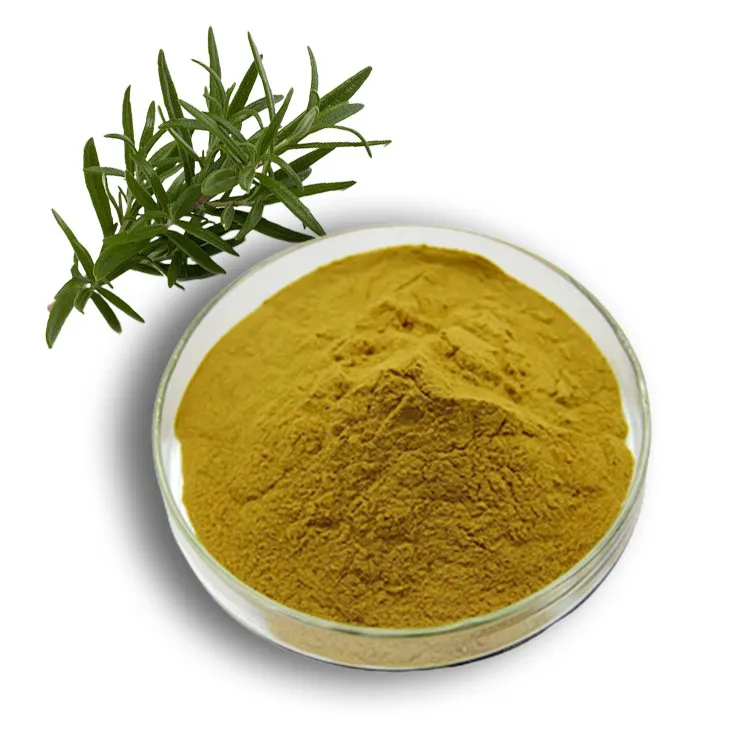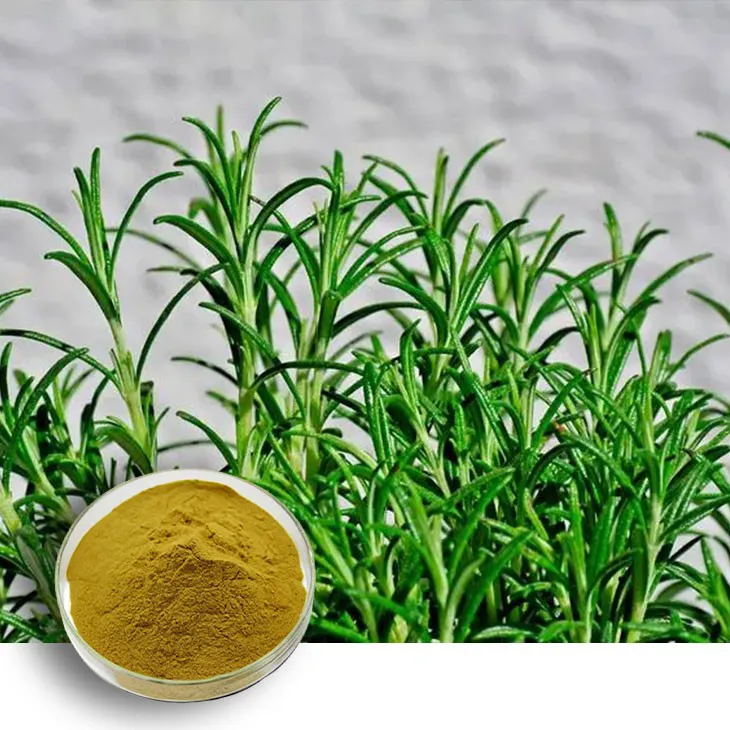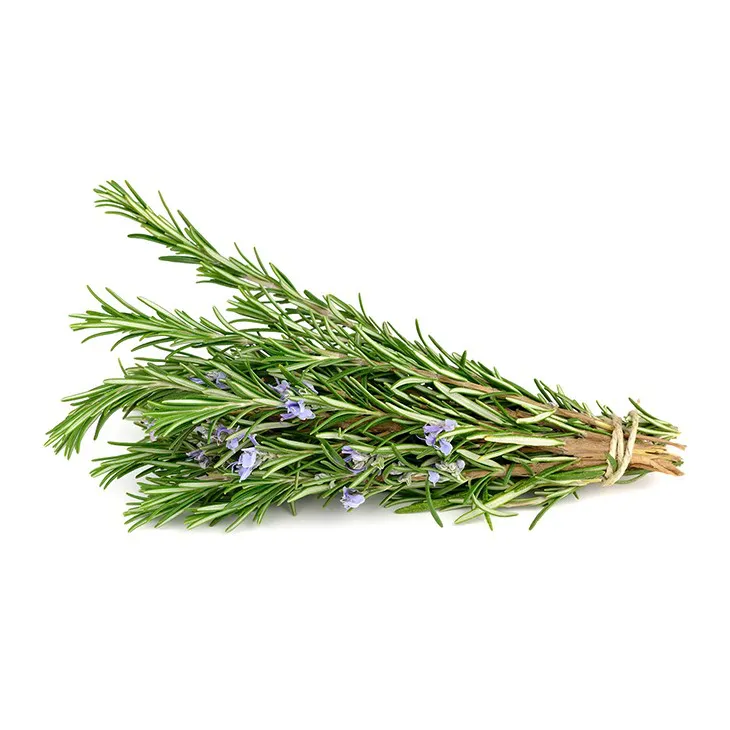- 0086-571-85302990
- sales@greenskybio.com
The best method for extracting rosemary extract.
2024-11-28

1. Introduction
Rosemary (Rosmarinus officinalis) is a well - known herb with a wide range of applications. Rosemary extract is rich in various bioactive compounds such as antioxidants, which have significant potential in the fields of food preservation, cosmetics, and pharmaceuticals. The extraction method plays a crucial role in obtaining high - quality Rosemary extract with maximum bioactivity and yield. This article will comprehensively discuss different extraction techniques, factors affecting extraction efficiency, and the quality of the final extract.

2. Different extraction techniques
2.1 Solvent extraction
2.1.1 Organic solvents
- One of the most common methods for extracting Rosemary extract is using organic solvents. Ethanol is frequently used as a solvent. It has the advantage of being relatively safe, and it can dissolve a wide range of bioactive compounds present in rosemary. For example, phenolic compounds such as rosmarinic acid, which is a major antioxidant in rosemary, can be effectively extracted using ethanol. The process typically involves soaking the dried rosemary leaves in ethanol for a certain period, usually several hours to a few days, depending on the desired extraction yield.
- Another organic solvent that can be used is hexane. However, hexane has some limitations. It is mainly used for the extraction of non - polar compounds in rosemary, such as essential oils. The extraction using hexane may require more complex purification steps since hexane is a non - polar solvent and may extract some unwanted substances along with the desired compounds. Moreover, hexane is flammable and poses some safety risks.
- Supercritical fluid extraction has emerged as an advanced extraction technique. Carbon dioxide (CO₂) is the most commonly used supercritical fluid in the extraction of rosemary extract. In the supercritical state, CO₂ has properties between those of a gas and a liquid, which gives it excellent solvent properties. The advantage of using supercritical CO₂ is that it is non - toxic, non - flammable, and leaves no residue in the final extract. It can selectively extract different components depending on the pressure and temperature conditions. For instance, at lower pressures, it can be used to extract essential oils, and at higher pressures, it can also extract phenolic compounds.
- The process of supercritical fluid extraction involves pressurizing CO₂ above its critical point (31.1 °C and 73.8 bar). The rosemary material is placed in an extraction vessel, and the supercritical CO₂ is passed through it. After extraction, the pressure is reduced, and the CO₂ returns to a gaseous state, leaving behind the extracted compounds. However, the equipment for supercritical fluid extraction is relatively expensive, which may limit its widespread use in small - scale operations.
2.2 Hydro - distillation
- Hydro - distillation is a traditional method for extracting essential oils from rosemary. In this method, the rosemary plant material is placed in water, and the mixture is heated. As the water boils, the steam carries the volatile compounds (essential oils) from the rosemary. The steam is then condensed, and the essential oils are separated from the water. This method is relatively simple and does not require the use of complex solvents. However, it has some drawbacks. Since the extraction process involves high temperatures and long extraction times, it may cause the degradation of some heat - sensitive compounds in rosemary. Moreover, the yield of non - volatile compounds such as phenolic acids is relatively low using hydro - distillation.

3. Factors affecting extraction efficiency
3.1 Particle size of the raw material
- The particle size of the rosemary leaves or other plant parts used for extraction has a significant impact on the extraction efficiency. Finer particles generally result in a higher extraction rate. This is because smaller particles have a larger surface area exposed to the solvent or extraction medium. For example, when using solvent extraction, the solvent can more easily penetrate and interact with the bioactive compounds in the smaller particles. However, if the particles are too fine, it may also lead to problems such as clogging during the extraction process, especially in methods like filtration after extraction.
3.2 Extraction time
- Extraction time is another crucial factor. In solvent extraction, for instance, as the extraction time increases, the amount of bioactive compounds extracted generally increases up to a certain point. However, after a certain optimal time, further increasing the extraction time may not significantly increase the yield and may even lead to the extraction of unwanted substances or the degradation of the desired compounds. In supercritical fluid extraction, the extraction time also needs to be optimized according to the type of compounds to be extracted and the pressure - temperature conditions.
3.3 Extraction temperature
- Temperature affects the extraction efficiency in different ways depending on the extraction method. In hydro - distillation, as mentioned earlier, high temperatures are required to generate steam for carrying the essential oils. However, excessive heat can cause the degradation of some heat - sensitive compounds. In solvent extraction, increasing the temperature can sometimes enhance the solubility of the bioactive compounds in the solvent, but it may also cause the evaporation of the solvent or the degradation of some compounds if the temperature is too high. In supercritical fluid extraction, temperature is an important parameter that, together with pressure, determines the solvent properties of the supercritical fluid.
3.4 Solvent - to - material ratio
- The ratio of the solvent used to the amount of rosemary material is an important factor. A higher solvent - to - material ratio generally leads to a higher extraction yield, as there is more solvent available to dissolve the bioactive compounds. However, using too much solvent may also increase the cost of the extraction process and may require more energy for solvent recovery in subsequent steps. Therefore, an optimal solvent - to - material ratio needs to be determined based on the specific extraction method and the desired compounds.

4. Quality of the final extract
4.1 Purity
- The purity of the rosemary extract is an important aspect of its quality. High - purity extracts are preferred in various applications. In solvent extraction, the choice of solvent and the purification steps after extraction play a crucial role in determining the purity. For example, if ethanol is used as a solvent, some impurities such as sugars and other water - soluble compounds may also be extracted. Therefore, additional purification steps such as filtration and chromatography may be required to obtain a pure extract. In supercritical fluid extraction, the purity can be relatively high as there are no solvent residues if the process is properly carried out.
4.2 Bioactivity
- The bioactivity of the rosemary extract is mainly determined by the presence and concentration of bioactive compounds such as antioxidants. Different extraction methods can affect the bioactivity of the final extract. For example, if the extraction process causes the degradation of antioxidant compounds, the bioactivity of the extract will be reduced. Supercritical fluid extraction, when carried out under appropriate conditions, can preserve the bioactivity of the compounds better than some traditional extraction methods such as hydro - distillation, as it can operate at lower temperatures and avoid the long - term exposure of the compounds to high heat or harsh chemical environments.

5. Conclusion
In conclusion, there are several methods for extracting rosemary extract, each with its own advantages and disadvantages. Solvent extraction, especially with ethanol, is a relatively simple and cost - effective method, but it may require additional purification steps. Supercritical fluid extraction offers high - quality extracts with good purity and bioactivity, but the equipment cost is relatively high. Hydro - distillation is suitable for the extraction of essential oils but may not be ideal for the extraction of non - volatile compounds. The choice of the best extraction method depends on various factors such as the desired compounds, the scale of production, and the cost - effectiveness. To obtain high - quality rosemary extract, it is necessary to carefully consider these factors and optimize the extraction conditions accordingly.
FAQ:
What are the common extraction techniques for rosemary extract?
Some common extraction techniques for rosemary extract include solvent extraction, supercritical fluid extraction, and steam distillation. Solvent extraction uses organic solvents like ethanol or hexane to dissolve the active compounds from rosemary. Supercritical fluid extraction, often using carbon dioxide in a supercritical state, offers advantages such as being more environmentally friendly and producing a purer extract. Steam distillation is mainly used to obtain essential oils from rosemary.
How does the choice of solvent affect the extraction of rosemary extract?
The choice of solvent has a significant impact on the extraction of rosemary extract. Different solvents have different polarities and solubilities. For example, polar solvents like ethanol are good at extracting polar compounds in rosemary, while non - polar solvents like hexane may be more suitable for non - polar components. The solvent also affects the yield and purity of the extract. Moreover, the safety and environmental impact of the solvent need to be considered, as some solvents may be toxic or not easily biodegradable.
What factors can influence the extraction efficiency of rosemary extract?
Several factors can influence the extraction efficiency of rosemary extract. Temperature is an important factor. Higher temperatures generally increase the solubility of compounds and can speed up the extraction process, but excessive heat may also cause degradation of some active components. The particle size of rosemary also matters. Smaller particles provide a larger surface area for extraction, which can enhance the extraction efficiency. The extraction time and the ratio of solvent to raw material also play crucial roles in determining the extraction efficiency.
How can one ensure the quality of the final rosemary extract?
To ensure the quality of the final rosemary extract, multiple steps can be taken. Firstly, starting with high - quality raw rosemary is essential. The extraction process should be carefully controlled, including factors like temperature, extraction time, and solvent choice as mentioned before. After extraction, purification steps may be required to remove impurities. Quality control tests, such as analysis of the active compound content, antioxidant activity assays, and microbiological tests, should be carried out to ensure that the extract meets the required standards.
Are there any new or emerging methods for extracting rosemary extract?
Yes, there are some new or emerging methods. For example, microwave - assisted extraction is an emerging technique. It uses microwave energy to heat the solvent and raw material rapidly, which can significantly reduce the extraction time compared to traditional methods. Enzyme - assisted extraction is also being explored. Enzymes can break down the cell walls of rosemary more effectively, making it easier to extract the active compounds. These new methods are still under research and development, but they show potential for more efficient and high - quality rosemary extract extraction.
Related literature
- Optimization of Rosemary Extract Extraction Process"
- "Advanced Techniques in Rosemary Extract Production"
- "Quality Evaluation of Rosemary Extract: A Comprehensive Review"
- ▶ Hesperidin
- ▶ Citrus Bioflavonoids
- ▶ Plant Extract
- ▶ lycopene
- ▶ Diosmin
- ▶ Grape seed extract
- ▶ Sea buckthorn Juice Powder
- ▶ Fruit Juice Powder
- ▶ Hops Extract
- ▶ Artichoke Extract
- ▶ Mushroom extract
- ▶ Astaxanthin
- ▶ Green Tea Extract
- ▶ Curcumin
- ▶ Horse Chestnut Extract
- ▶ Other Product
- ▶ Boswellia Serrata Extract
- ▶ Resveratrol
- ▶ Marigold Extract
- ▶ Grape Leaf Extract
- ▶ New Product
- ▶ Aminolevulinic acid
- ▶ Cranberry Extract
- ▶ Red Yeast Rice
- ▶ Red Wine Extract
-
Feverfew Extract
2024-11-28
-
Mulberry leaf Extract
2024-11-28
-
Beetroot Powder
2024-11-28
-
Moringa powder
2024-11-28
-
Angelica sinensis extract
2024-11-28
-
Agaricus Blazei Extract
2024-11-28
-
Kidney Bean Extract
2024-11-28
-
Fig Extract
2024-11-28
-
Kelp Extract Powder
2024-11-28
-
Avocado Extract Powder
2024-11-28





















